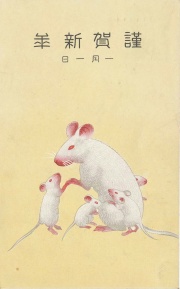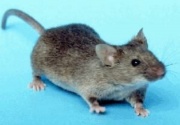Difference between revisions of "Mouse"
Jump to navigation
Jump to search
| Line 2: | Line 2: | ||
== Description == | == Description == | ||
[[File:Housemousevt.jpg|thumb|House mouse ''Mus domesticus''0]] | [[File:Housemousevt.jpg|thumb|House mouse ''Mus domesticus''0]] | ||
| − | A small rodent (Mus Musculus), such as the house mouse (Mus Domesticus), that is found throughout the world, except Antartica. Mice are generally considered pests, but some species are kept as pets and others are used in laboratory experiments. Mice eat seeds, insects, vegetation, and many other items. They can rapidly damage collections by chewing through fabric, wood, leather, and other types of containers to reach food or create a nesting site. Signs of mouse activity include gnaw marks, fecal pellets, urine stains, and mousy odor (MuseumPests.net). | + | A small rodent (''Mus Musculus''), such as the house mouse (''Mus Domesticus''), that is found throughout the world, except Antartica. Mice are generally considered pests, but some species are kept as pets and others are used in laboratory experiments. Mice eat seeds, insects, vegetation, and many other items. They can rapidly damage collections by chewing through fabric, wood, leather, and other types of containers to reach food or create a nesting site. Signs of mouse activity include gnaw marks, fecal pellets, urine stains, and mousy odor (MuseumPests.net). |
== Synonyms and Related Terms == | == Synonyms and Related Terms == | ||
| − | mice (pl.); Mus Musculus; Mus Domesticus (house mouse); mus (Dan., Sven.); Maus (Deut.); ratón (Esp.); souris (Fr.); muis (Ned.); mysz (Pol.); | + | mice (pl.); ''Mus Musculus''; ''Mus Domesticus'' (house mouse); mus (Dan., Sven.); Maus (Deut.); ratón (Esp.); souris (Fr.); muis (Ned.); mysz (Pol.); |
==Physical and Chemical Properties== | ==Physical and Chemical Properties== | ||
Latest revision as of 08:15, 27 July 2022
Description
A small rodent (Mus Musculus), such as the house mouse (Mus Domesticus), that is found throughout the world, except Antartica. Mice are generally considered pests, but some species are kept as pets and others are used in laboratory experiments. Mice eat seeds, insects, vegetation, and many other items. They can rapidly damage collections by chewing through fabric, wood, leather, and other types of containers to reach food or create a nesting site. Signs of mouse activity include gnaw marks, fecal pellets, urine stains, and mousy odor (MuseumPests.net).
Synonyms and Related Terms
mice (pl.); Mus Musculus; Mus Domesticus (house mouse); mus (Dan., Sven.); Maus (Deut.); ratón (Esp.); souris (Fr.); muis (Ned.); mysz (Pol.);
Physical and Chemical Properties
- Size=5-8 in (12-21 cm)
- Color=gray or brown
- Tail=semi-hairless and about equal in length to the body
- Litter size=5-7 pups
- Gestation=18-21 days
- Lifespan=1-2 years
Additional Images
Resources and Citations
- MuseumPests.net: House Mouse
- Olympus Microscopy Resource Center at http://www.olympusmicro.com/galleries/polarizedlight/pages/mousehairsmall.html
- Wikipedia: http://en.wikipedia.org/wiki/Mouse (Accessed Nov. 9, 2005)



